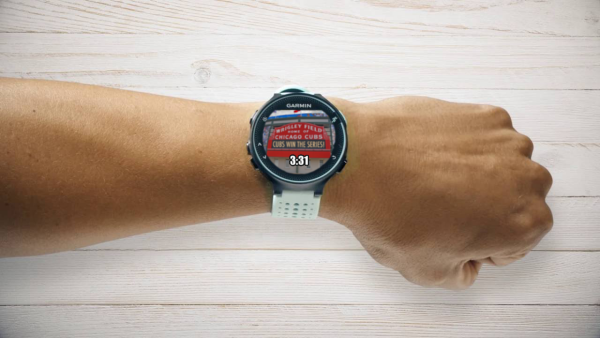
They also hope to establish a model for best practices that can be used for billing insurance, so healthcare professionals can get properly paid for their work in helping patients deal with emotional burdens of diabetes.
#Connect iq garmin watch faces vivactive music manual
In the end, he says their study goal is to develop a diabetes distress treatment manual that can be shared throughout the medical community. “We took that experience… and we put together the current project, which aims to modify that CBT approach for young adults with T1D who are more at-risk for diabetes distress and mental health issues,” Gonzalez said. It also showed improved A1C results, and importantly, reduced levels of diabetes distress, based on survey data.

The research showed that using that tool helped participants take their meds more regularly, and also check their blood sugars more often, based on fingerstick meter data downloads. That study included using electronic pill capsules to help patients improve their medication adherence, by recording how often they opened their pill bottles. This study builds in part on 2013 research utilizing CBT to help people with type 2 diabetes with their disease management.

This is a big point for Agarwal, who focuses some of her work on racial and ethnic disparities in diabetes care.ĭuring this study, they plan to test out ready-for-practice care solutions that include: It’s also important that this study will focus recruitment efforts on young adults from Hispanic and Black backgrounds who may be primarily Spanish-speaking, to demonstrate how impactful this type of telemedicine approach can be for people with diabetes in underserved communities. Notably, they’ll use continuous glucose monitors (CGM) in this research to compare effects for those who use the technology versus those who don’t. That could change, if two diabetes researchers at Albert Einstein College of Medicine in New York have anything to say about it.įor their study based in New York City, the researchers will recruit 150 young adults nationally between 18 and 30 years old to determine if telemedicine-delivered CBT has any significant impact on both diabetes distress and blood sugar management. This project emerges among widespread recognition that the reality of living with diabetes, whether it’s insulin-dependent type 1 diabetes (T1D) or another type, can put a huge strain on people’s psyche.ĭaily stress can come from frequent low blood sugars that steal our focus or derail plans, the fatigue and other effects of higher blood sugars, and the constant pressure to monitor our blood, adjust our medication doses, and manage our bodily functions in ways that people without this condition can barely imagine.īut that doesn’t necessarily mean a person rises to the level of “clinical depression,” the formal diagnosis that typically triggers access to medical treatment and insurance reimbursement for that care.įar more common is the daily psychosocial effect known as “ diabetes distress.” Unfortunately the medical community isn’t fully equipped to recognize, treat, or even get reimbursed for addressing these emotional health issues effectively. A new research project in New York is tackling the emotional side of life with diabetes, with the goal of developing a treatment manual and billable model of care that could be used across the diabetes clinical community.


 0 kommentar(er)
0 kommentar(er)
